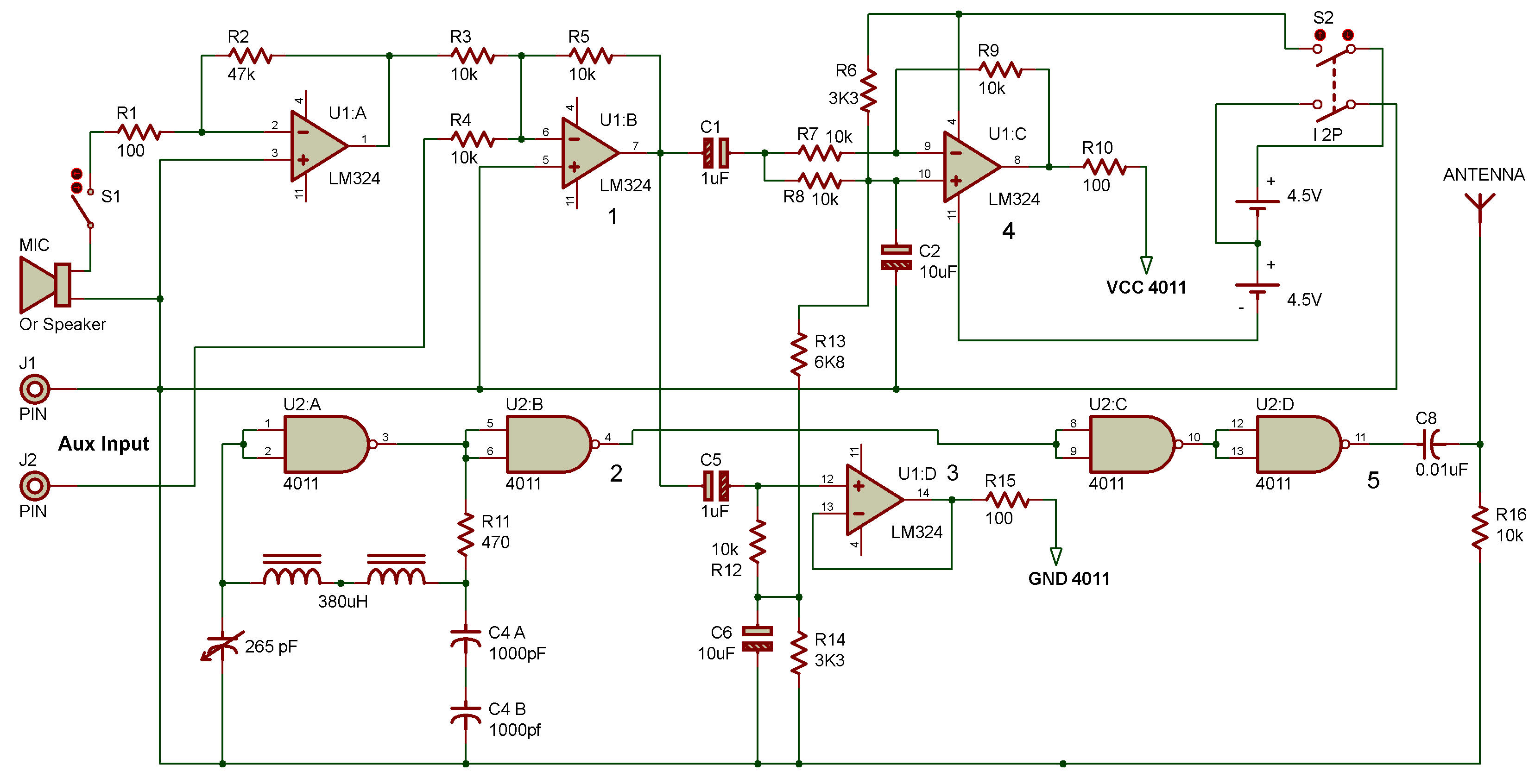
AM transmitter

How would like to make an AM transmitter that can broadcast your own voice or any other sound by radio and let your friends hear it on an AM radio some distance away from you?
You use this project by finding a clear spot on the AM radio like we've done in previous radio projects.
The AM radio uses a method called amplitude modulation. (See, this is where the abbreviation AM comes from!).
Your voice or the music has about 40 Hz to 20,000 Hz frequency. These are too low to transmit as radio waves. So we use much higher frequencies for radio waves ... 530 000 Hz to 1 620 000 Hz in case of normal AM broadcast. You see these frequencies shown on AM radio as 530kHz to 1,620 kHz.(Remember? k stands for kilo, which means a thousand.)
The sound signals input to the transmitter changes the amplitude of the radio wave. At the receiver side, the radio frequency is deleted and only the sound signal is picked up—this is called "detection."
When you transmit your own voice using the speaker as a microphone, U1A amplifies the signal picked up by the speaker. When transmitting music, a signal sent to terminal AUX is mixed with the audio signal by U1B. U1C and U1D are also the amplifiers, but the outputs from two amplifiers have opposite phase-when one wave is rising, the other wave is falling.
The AM broadcast frequency is produced by U2A: you can change the frequency with the variable capacitor.
U2B and U2C act as a buffer, and U2D is modulator. Note that the outputs of two amplifiers are connected to positive and negative terminals of this IC.
So, when the sound signals come in, it is amplified and applied to the IC as the positive and negative power voltages: when the positive voltage becomes high, the negative voltage becomes lower in the same amount, and the output from U2D becomes larger...thus the "Amplitude Modulation!"
